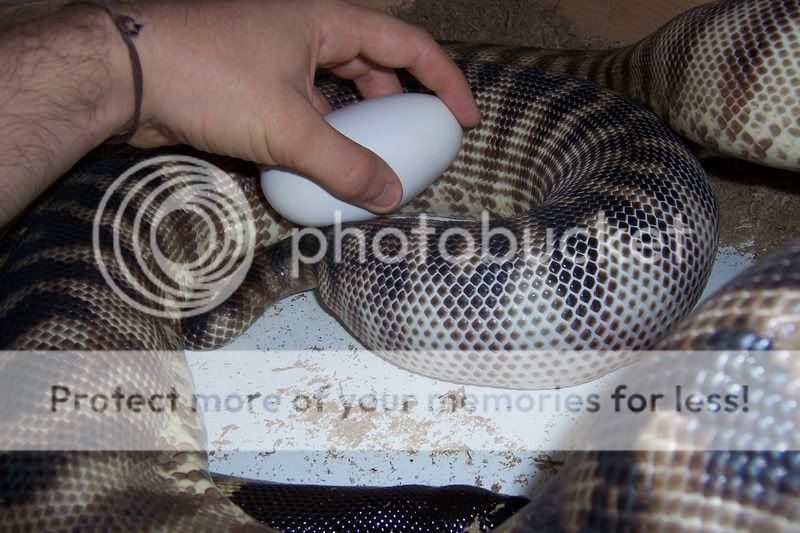slacker
Very Well-Known Member
- Joined
- Nov 1, 2007
- Messages
- 1,423
- Reaction score
- 2
This is quite possibly a stupid question, but I'd like to hear how others go about doing this, as next year I hope will bring my first clutch.
My understanding is that once the female has dropped her clutch, they're likely to be fairly defensive/aggressive, and I'm also of the belief that they're unlikely to move from the eggs on a regular basis.
I also understand it's important not to disturb the eggs, or turn them, as they're fairly delicate.
What is the best way to then remove the eggs from the female? If she's defensive/aggressive and wrapped around eggs which I cannot disturb, what is the best way of removing the eggs from the mother with the smallest chances of damaging the eggs?
I could always not, and leave incubation up to her, but I'm thinking it would probably be better to incubate them artificially.
Any advice would be appreciated
My understanding is that once the female has dropped her clutch, they're likely to be fairly defensive/aggressive, and I'm also of the belief that they're unlikely to move from the eggs on a regular basis.
I also understand it's important not to disturb the eggs, or turn them, as they're fairly delicate.
What is the best way to then remove the eggs from the female? If she's defensive/aggressive and wrapped around eggs which I cannot disturb, what is the best way of removing the eggs from the mother with the smallest chances of damaging the eggs?
I could always not, and leave incubation up to her, but I'm thinking it would probably be better to incubate them artificially.
Any advice would be appreciated




